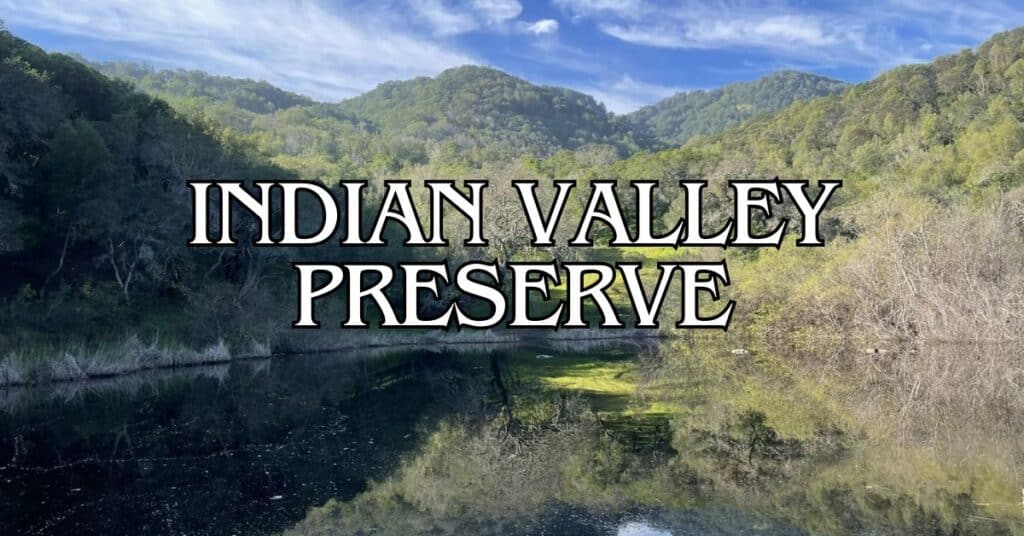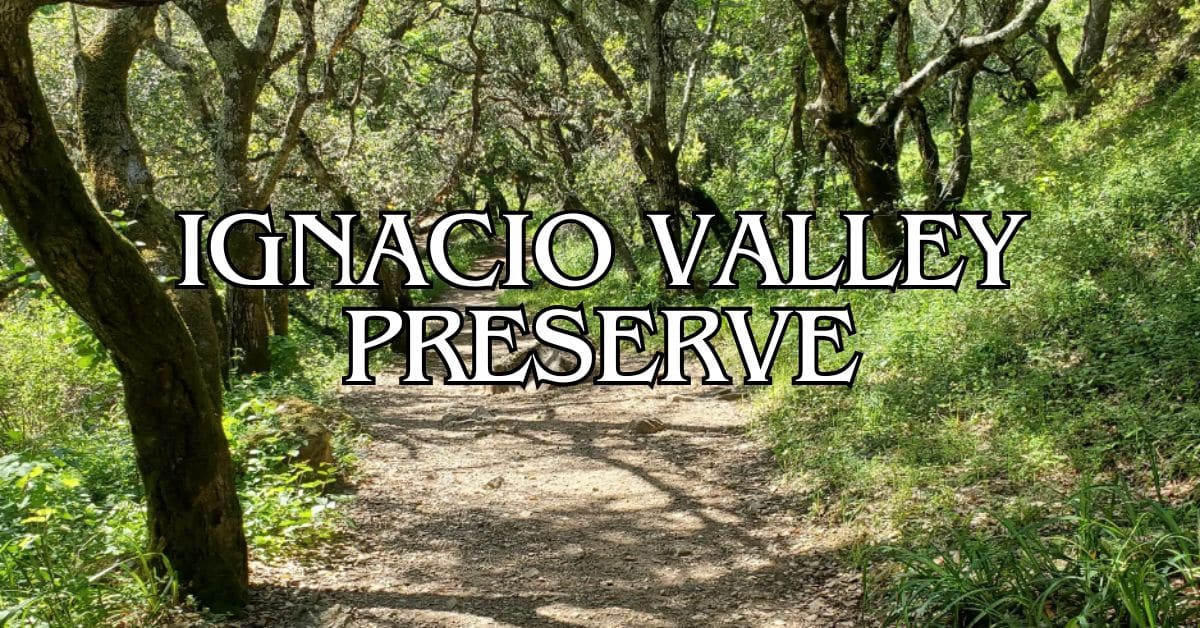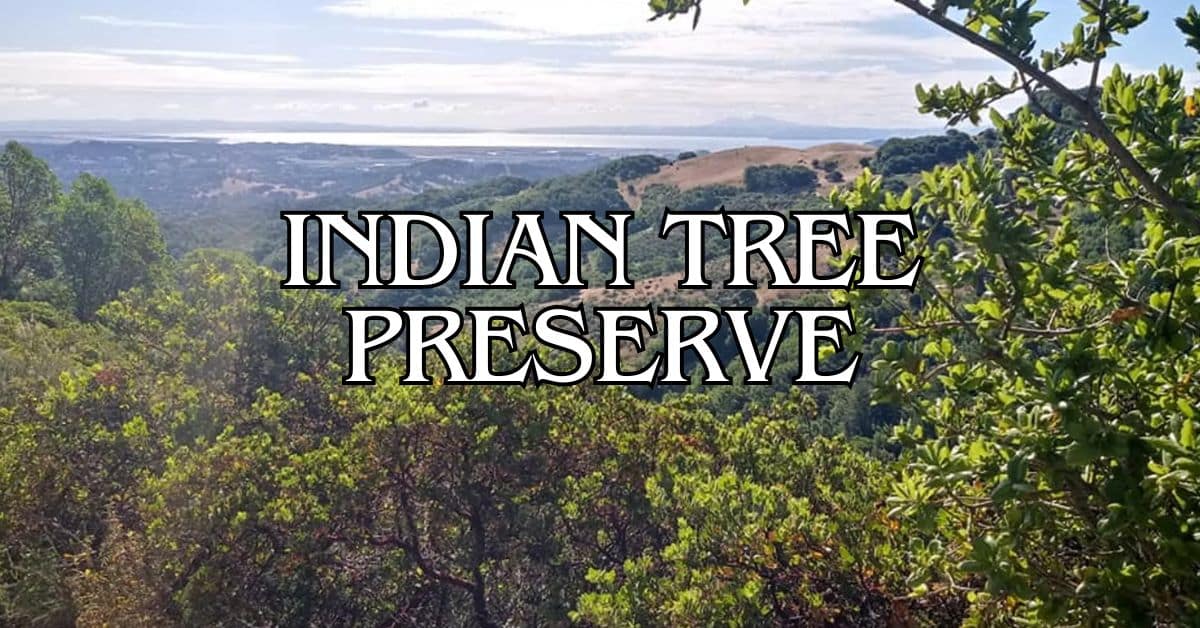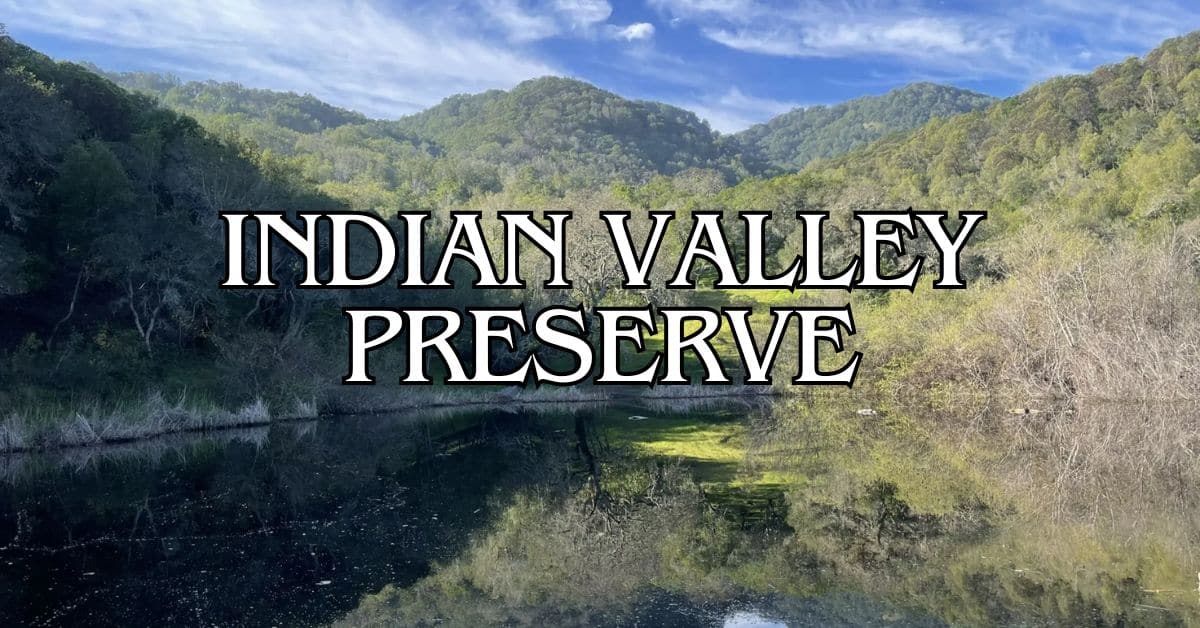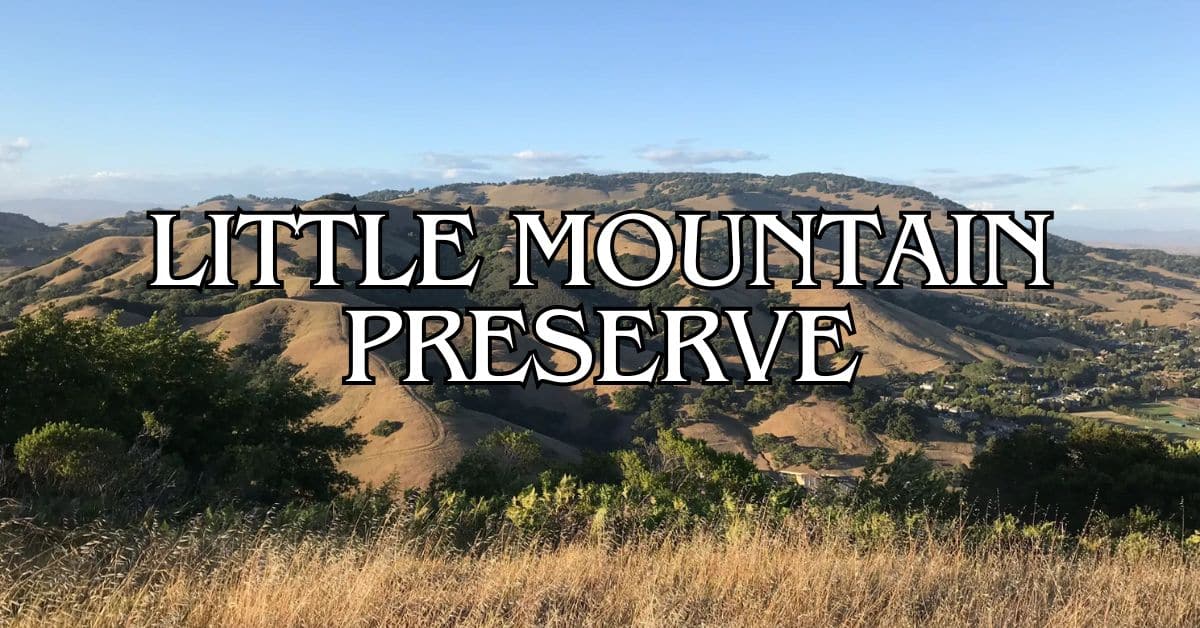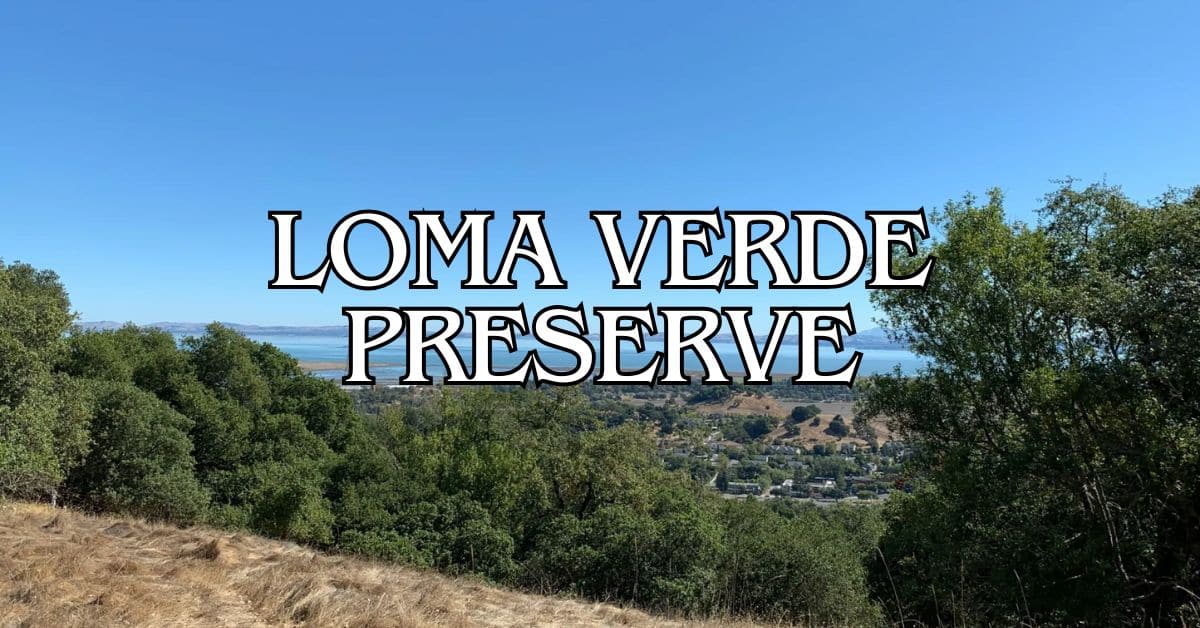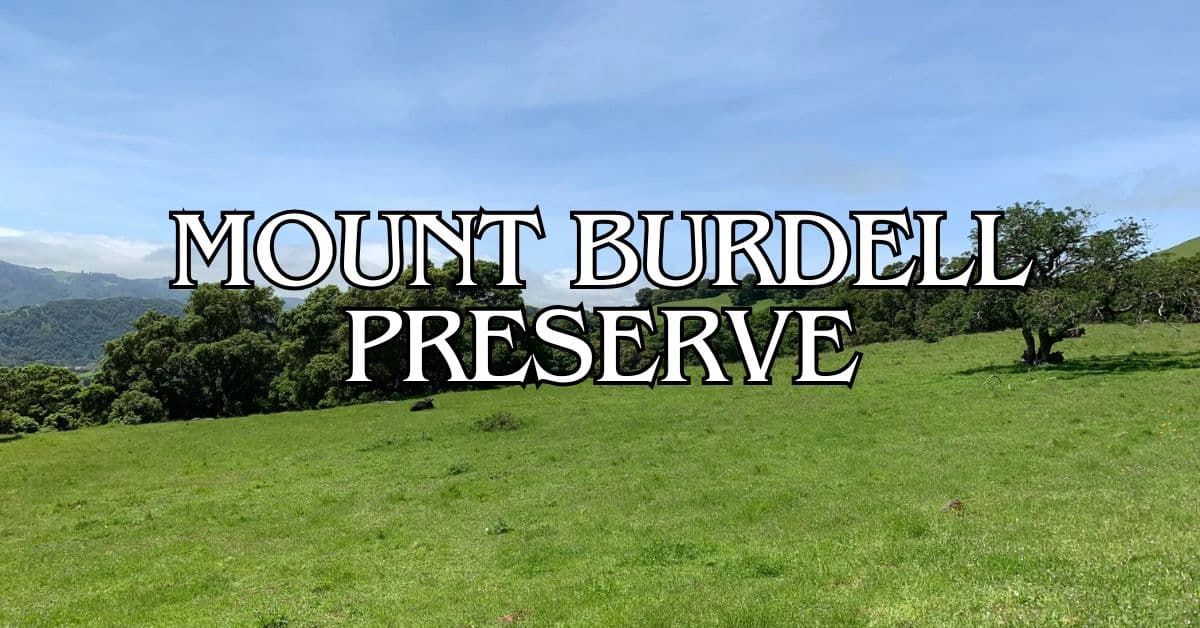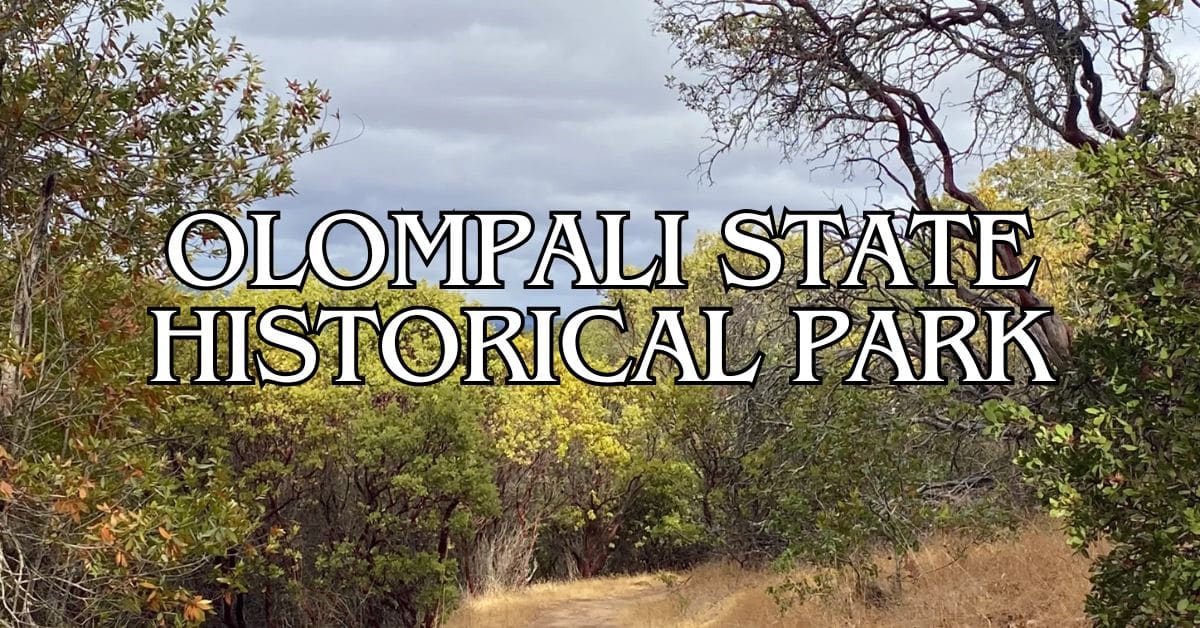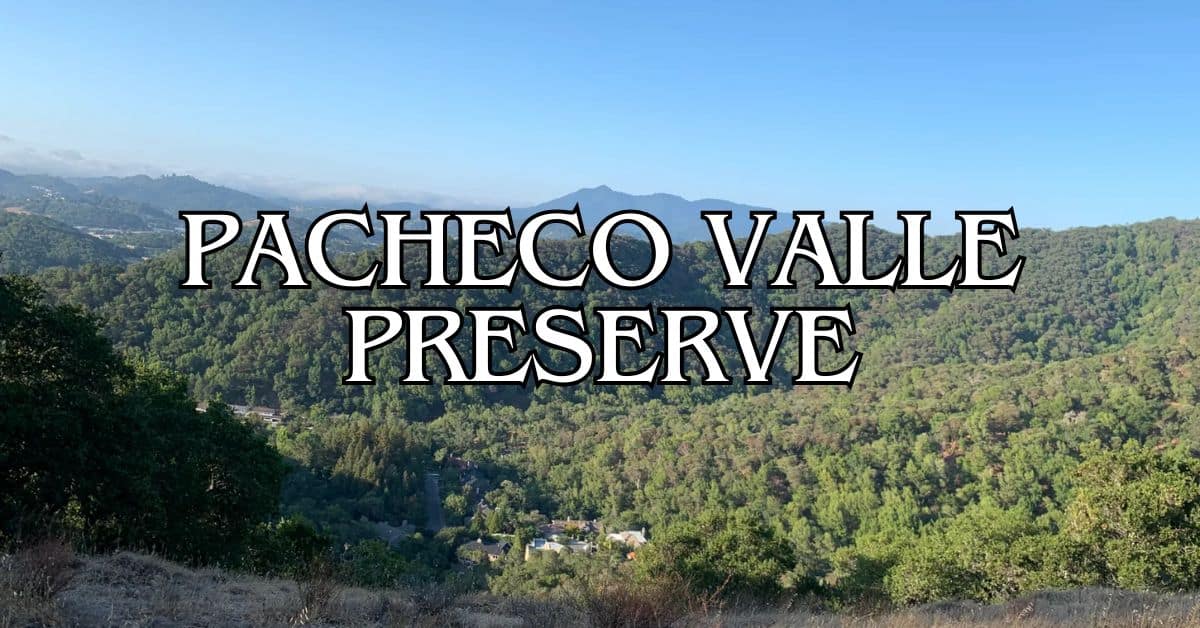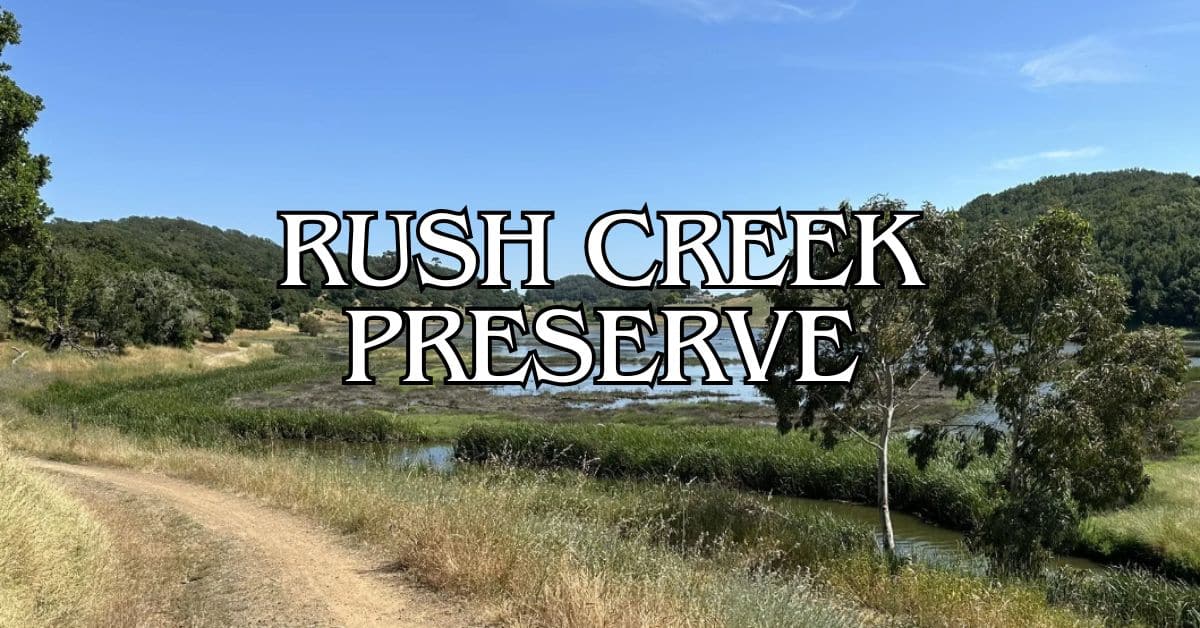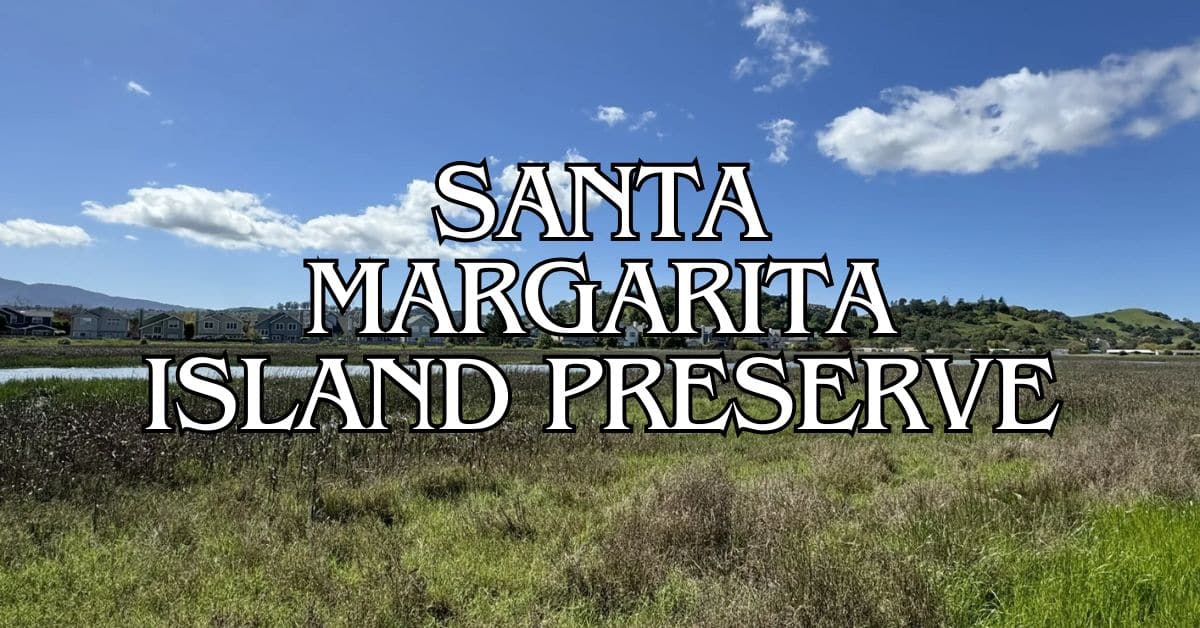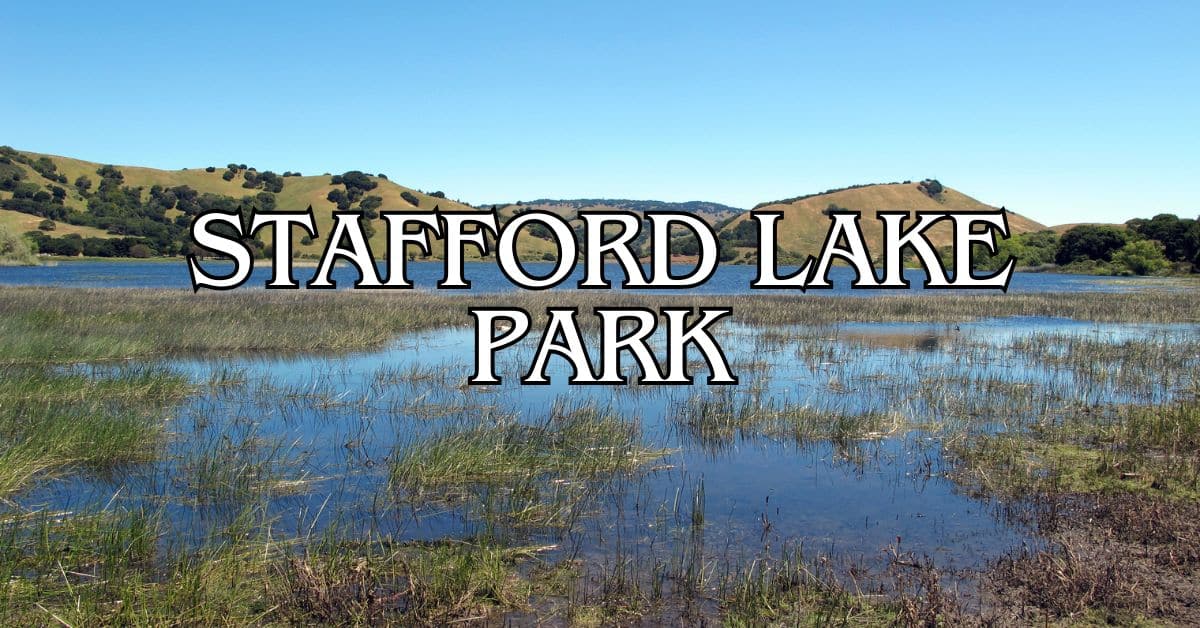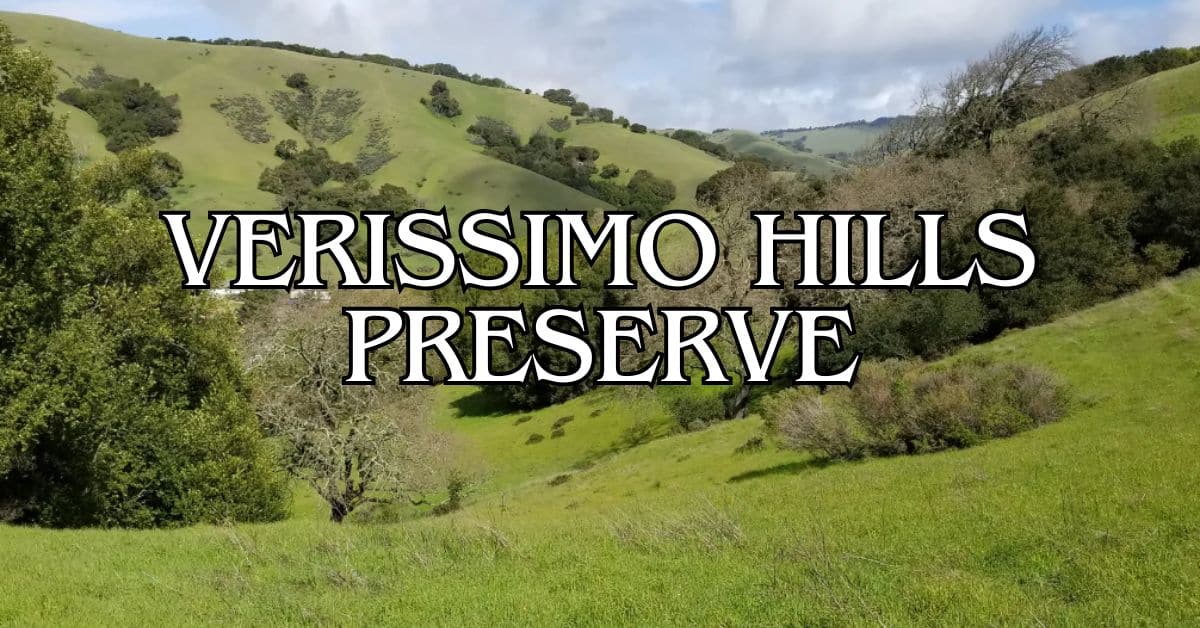Indian Valley Preserve sits tucked away in Novato, offering 558 acres of natural beauty in northern Marin County. This hidden gem wraps around the College of Marin’s Indian Valley campus and features a network of trails perfect for hikers, cyclists, and horseback riders of all skill levels.
You’ll find miles of accessible paths weaving through forested hills and open meadows. Indian Valley really does have something for everyone—maybe you’re just looking for a quick walk, or maybe you’ve got the whole day to wander with family.
Discover hand-picked hotels and vacation homes tailored for every traveler. Skip booking fees and secure your dream stay today with real-time availability!
Browse Accommodations Now
When you visit Indian Valley, you’ll get a taste of Marin County’s quieter side, far from the usual tourist bustle. The well-kept trails give you gorgeous views and even connect to the neighboring Ignacio Valley Open Space Preserve, so you can stretch your adventure as far as you want. Bring some water, dress in layers (trust me, the weather can surprise you), and don’t forget your camera—the scenery changes with every season.
Overview of Indian Valley Preserve
Indian Valley Preserve is a sprawling open space with flat trails, seasonal waterfalls, and hiking opportunities for every skill level. Its varied terrain and native ecosystems really show off Marin County’s natural beauty.
Location and Access
You’ll find Indian Valley Open Space Preserve in Novato, up in northern Marin County. The main entrance is at the end of Indian Valley Road, but you can also get in via Pacheco Valle or through the College of Marin Indian Valley Campus.
There’s a parking lot at the main entrance, though it fills up fast on weekends and holidays. The preserve opens at sunrise and closes at sunset, so you’ve got a good window to explore.
Public transportation isn’t great out here, so driving is your best bet. Once you arrive, grab a trail map at the entrance—it’ll save you from wandering in circles.
History of Indian Valley Preserve
Long before hikers and cyclists, Coast Miwok Native Americans called this land home, living off what the area provided for thousands of years.
By the 1800s, ranchers and farmers had moved in, running cattle and growing crops. Local families owned much of the land until the mid-1900s, when Marin County started to change and development crept in.
Thankfully, the Marin County Open Space District began piecing together parcels in the 1970s, aiming to save these open spaces for everyone. That’s how Indian Valley Preserve came to be—a place to protect nature and give folks a place to roam.
Now, Indian Valley stands as both a haven for wildlife and a reminder of Marin’s rural past.
Climate and Weather
Indian Valley Preserve gets that classic Bay Area Mediterranean climate. Summers? Warm and dry, usually between 70-85°F, with August and September topping the charts.
Winters are mild and a bit soggy, with most rain falling from November to March. Even then, it rarely dips below 40°F, so hiking’s pretty much a year-round thing. Come spring, wildflowers and fresh greenery take over after the rains.
The preserve’s hills and valleys create little microclimates—valley floors feel cooler and damper, while the ridges can be warm and dry. Fog sometimes rolls in during the mornings, especially in summer.
Honestly, spring is the sweet spot: waterfalls are running, wildflowers are everywhere, and the weather is just right. Still, it’s smart to check the forecast, since trails can get muddy after a storm.
Rules and Regulations
Stick to the marked trails—it’s better for the environment and keeps the area looking great. Dogs are allowed, but keep them leashed in developed spots and under voice control elsewhere.
You can ride bikes on fire roads, but not on the narrow hiking trails. Horses are welcome on most paths, except for those marked hiker-only. And if you see a horse coming, give them the right of way.
A few things you can’t do:
- No smoking or open flames
- No camping or overnight stays
- Don’t collect plants, animals, or artifacts
- No motorized vehicles
- No hunting or fishing
Open from sunrise to sunset. Sometimes, they’ll close the preserve if there’s high fire danger or right after heavy rain to protect the trails. Whatever you bring in, take it back out—leave no trace so others can enjoy it too.
Natural Beauty and Landscape
Indian Valley Preserve is a patchwork of Marin County’s most interesting natural environments. Within its 558 acres, you get up close and personal with California’s wild side.
Rolling Hills and Valleys
The preserve wraps around the College of Marin’s Indian Valley campus, showing off gentle, grassy hills that shift with the seasons. In spring, everything turns lush and green—it’s almost unreal.
Come winter and spring, the hills are vibrant. Once summer hits, they fade to golden-brown, which looks incredible against the blue sky.
Valleys cut between the hills, creating natural corridors and little pockets of unique plant life. After rain, creeks start running, adding a peaceful soundtrack as you hike.
Several trails wind through these hills and valleys, each giving you a new angle on the landscape.
Redwoods and Forests
Shaded forests offer a cool escape, especially when the sun’s beating down. Oaks and California bay laurels dominate, and the canopy above filters the light in a way that’s almost magical.
If you wander into the damper parts, you might spot a few California redwoods—not as many as in other Marin parks, but enough to make you stop and stare.
After rain, the bay laurels fill the air with their spicy scent, and the whole forest seems to come alive.
Wildflowers and Seasonal Blooms
Spring turns Indian Valley into a wildflower showcase. From March through May, native blooms like California poppies, lupines, and buttercups light up the hills and meadows.
The different terrains mean flowers show up at different times—sunny hillsides first, then the shadier valleys.
After a good rain, the trails are bursting with color. Keep an eye out for California newts near creeks and seasonal waterfalls that pop up throughout the preserve.
Near the Pond trailhead, there’s an organic farm that adds a cultivated twist to the wild scenery.
Scenic Views
If you climb higher, the trails give you panoramic views of Marin County. On a clear day, you can see for miles.
Several lookout spots let you stop and soak it all in, especially in late afternoon when the hills glow gold.
Some viewpoints show off the whole Indian Valley below, others give you intimate glimpses of forested canyons or small waterfalls.
Photographers, bring your camera—morning and evening light is best. Sometimes, fog drifts in from the coast, turning everything misty and mysterious.
Hiking and Nature Trails
Indian Valley Preserve has plenty of trails winding through forests and open meadows. Whether you’re after an easy walk or something that gets your heart pumping, you’ll find it here.
Overview of Hiking Trails
The preserve’s network of trails suits everyone, from beginners to seasoned hikers. Shady oak and bay forests keep things cool, even in the summer.
Most paths are well-kept and clearly marked. Trail maps at entrances and junctions help you figure out where you are. Terrain ranges from flat near the entrance to steeper climbs deeper in.
Trails welcome hikers, cyclists, and horseback riders. Dogs are allowed on most trails—just keep them leashed. Compared to other Marin spots, Indian Valley is usually less crowded, so you can actually hear the birds.
Popular Trails and Routes
The Ad and Gloria Schwindt Trail makes a nice 2.5-mile loop through oak and bay forests, with great views and connections to other paths.
The Ken Harth Waterfall Trail is a hit with families. It’s a short, easy hike to a seasonal waterfall that really puts on a show after winter rains—great for kids or anyone new to hiking.
Indian Valley Fire Road is the main route through the preserve. It’s wide, mostly flat, and runs for 1.8 miles, connecting to most other trails.
Want a longer adventure? Link up a few trails for loops up to 5 miles, with moderate ups and downs.
Big Tree Trail Highlights
Big Tree Trail lives up to its name, winding 1.2 miles through some of the densest, oldest forest in the preserve. Massive oaks and bays—some over 200 years old—line the way.
The trail’s moderately tough, with a few short, steep bits and about 300 feet of elevation change.
You might spot deer, rabbits, or all sorts of birds if you keep your eyes peeled. The thick canopy keeps things cool, which is a relief on hot days.
It links up with Ship’s Mast Trail, so you can mix and match your route. Lots of hikers rave about this trail for its peaceful vibe.
Ship’s Mast Trail Experience
Ship’s Mast Trail is the preserve’s toughest hike, at 1.5 miles with about 500 feet of elevation gain.
The climb pays off with killer views of the valleys—on a clear day, you can even spot San Pablo Bay. The trail got its name from a tree formation at the top that looks like a ship’s mast.
Spring brings wildflowers to the exposed sections, and many swear March to May is the best time to visit.
Watch your step—the trail gets rocky in places. Good hiking shoes are a must, and bring extra water, since there’s not much shade up here.
Wildlife and Bird Watching
Indian Valley Preserve is a haven for wildlife watchers. Its forests, ponds, and seasonal waterfalls create ideal spots to catch glimpses of both local and migrating critters.
Animals Commonly Seen
You never know what you’ll run into out here. Wild turkeys often strut along the trails in little groups, especially early or late in the day. Lizards love to sun themselves on rocks when it’s warm.
Check out the ponds in spring—frogs and tadpoles are everywhere. Other regulars include:
Find the perfect hotel or vacation rental. Instant booking, no fees!
View Top Stays
- Coyotes (more active at dawn and dusk)
- Bobcats (shy, but sometimes spotted off the main paths)
- Foxes (mostly nocturnal, but you might catch one early in the morning)
- Deer (pretty common at the forest edges)
If you want to see more wildlife, move quietly and bring binoculars. Early mornings are usually your best shot.
Bird Watching Opportunities
Indian Valley Preserve really is a bird watcher’s paradise—so many species either live here or pass through. The preserve boosts Marin County’s already impressive bird diversity, with nearly 490 species recorded across the region’s parks and preserves.
You’ll find red-winged blackbirds near the marshy spots, their flashy red shoulder patches obvious when they take off. The woods are home to owls, both great horned and screech varieties—try listening for their calls as dusk settles in.
Some favorite birding spots:
- Edges where forest meets open land
- Around small ponds and seasonal streams
- Open meadows, especially right after sunrise
If you can, bring a Northern California bird guide. Many folks keep life lists and it’s not rare for visitors to spot dozens of different birds in just one trip.
Seasonal Wildlife Highlights
Wildlife activity at Indian Valley Preserve changes a lot with the seasons. Spring gets especially lively—animals shake off winter routines and migratory species return.
Spring (March-May):
- Wildflowers lure in butterflies and pollinators
- Tadpoles show up in the ponds
- Nesting birds get busy (and noisy)
Summer (June-August):
- Lizards dart everywhere on sunbaked trails
- You might see fawns trailing their mothers through the woods
- Dwindling water means more animals gather at the last ponds
Fall (September-November):
- Migrating birds pass through
- Mammals hustle to prep for winter
- Cooler days bring more wildlife out during daylight
Winter (December-February):
- Fewer people, so you might get closer wildlife encounters
- With less foliage, resident birds are easier to spot
- After rain, mushrooms pop up and attract foraging critters
Photography and Scenic Spots
Indian Valley Preserve has some seriously beautiful views and a mix of landscapes that make it a dream for photographers. Forests, meadows, and seasonal waterfalls—there’s always something new to capture.
Best Vantage Points
The upper meadows offer sweeping views of the valley and hills. If you’re after landscape shots, spring is magic—wildflowers paint the fields with color.
Forested hillsides give you elevated perspectives that feel extra dramatic in the morning, especially when sunlight streams through the trees. Try the ridge trails if you want big panoramic views of the preserve and beyond.
Near the College of Marin’s Indian Valley campus, there are clearings where you can frame the preserve against Mount Burdell—these spots really shine at golden hour when the light gets warm and moody.
During winter and early spring, check out the seasonal creek crossings for interesting foregrounds with hills behind.
Photography Tips
Early morning or late afternoon is best—the light is softer and brings out more depth in your photos. Midday sun? It tends to flatten everything and cast harsh shadows.
If you’re after waterfall shots during rainy months, bring a tripod. The preserve has a few little cascades that look great with long exposures.
A wide-angle lens (16-35mm) is ideal for those big meadow shots. If you want to zoom in on distant wildlife or isolate features, a 70-200mm telephoto comes in handy.
A polarizing filter can make blue skies pop and cut glare off wet leaves, especially just after it rains.
Don’t forget rain covers for your gear—winter weather can change fast out here.
Capturing Natural Features
The seasonal waterfalls (best from December through April) are a real highlight—if it’s rained recently, the water tumbling over mossy rocks is pretty spectacular.
California newts show up along creek paths during the wet months. Try some macro shots, but please don’t disturb them.
Wildflowers go wild in March and April—look for poppies, lupines, and buttercups. They make perfect foregrounds for landscape photos.
The old oak trees, with their gnarled branches, are photogenic any time. They look especially moody in morning fog or with sunset light behind them.
Grassy hills shift from bright green in spring to golden brown in summer, giving you totally different moods depending on when you visit.
Nearby Attractions in Marin County
Indian Valley Preserve is wonderful, but Marin County’s packed with other places worth checking out. From laid-back towns to outdoor spots, you’ll find something interesting just a short drive away.
Novato and Local Towns
Novato is the nearest city—it’s got a chill downtown with shops and restaurants along Grant Avenue. If you’re curious about local history, the Novato History Museum is a small but neat stop.
About 20 minutes south, San Rafael offers the pretty Mission San Rafael Arcángel and a lively Fourth Street shopping scene.
For waterfront views, head to Tiburon or Sausalito. Tiburon’s Main Street has stylish boutiques and restaurants looking out over San Francisco Bay. You can catch a ferry from either town to San Francisco for fantastic bay views.
Sausalito is quirky, with its houseboat neighborhoods and art galleries. It’s easy to lose a few hours just wandering the waterfront and poking into shops.
Stafford Lake and Recreation
Stafford Lake Park is only 10 minutes from Indian Valley and covers 139 acres with lots of recreation options. The lake itself is stocked with catfish and trout, so bring your fishing gear.
The park also has:
- An 18-hole disc golf course winding through oaks
- Big picnic spots with BBQs
- A playground for kids
- Mountain biking trails for all skill levels
China Camp State Park nearby is great for hiking and biking, plus you get San Pablo Bay views. The old shrimping village is worth a quick look if you’re into local history.
If you want to get on the water, Blackie’s Pasture in Tiburon and Schoonmaker Beach in Sausalito both offer gentle swimming spots and paddleboard rentals.
Wineries and Tasting Rooms
Marin County’s wine scene is small but pretty impressive, especially for Pinot Noir and Chardonnay. Trek Winery in Novato is the closest tasting room to Indian Valley, and they often have live music.
Point Reyes Vineyards, about 25 minutes west, is known for sparkling wines and weekend tastings with bay views.
If you want to go bigger, head north to Sonoma County. Ram’s Gate Winery and Cline Cellars are just 15 minutes from Novato and both offer beautiful tasting settings.
Most tasting rooms ask for reservations on weekends. Fees usually run $15-30 per person, but they’re often waived if you buy a bottle.
Dining and Local Eateries
Marin County’s food scene is fantastic—lots of fresh, local ingredients. In Novato, Boca Pizzeria does great wood-fired pies, and Boca Tavern serves up elevated American fare with a local twist.
For breakfast, Marvin’s Breakfast Club is a classic. If you’re vegetarian, Lotus Cuisine of India has plenty of options.
Nearby, check out:
- Sol Food in San Rafael for Puerto Rican dishes
- Servino Ristorante in Tiburon for Italian with a view
- Fish in Sausalito for sustainable seafood right on the water
- Poggio Trattoria for upscale Italian in Sausalito
Farmers markets are everywhere. Novato’s runs Tuesdays from May through September—perfect for picking up picnic supplies or gifts.
Connections to Other Bay Area Parks
Indian Valley Preserve links up with several other Marin County parks and open spaces, creating a huge web of trails for you to explore. It’s easy to extend your hike and see a wide range of landscapes.
Indian Tree Open Space Preserve
Indian Tree Open Space Preserve sits northwest of Indian Valley and offers a different vibe—think redwood and Douglas-fir forests. The Bay Area Ridge Trail runs through here, and it’s a pretty mellow hike for most people.
You can get to Indian Tree from Indian Valley using connecting trails, but be ready for a longer trek. There are several loop options between 3-5 miles, with varying difficulty.
The redwood groves here really stand out compared to Indian Valley’s open spaces. Watch for deer, hawks, and sometimes even bobcats if you’re out early or late.
The preserve’s name comes from a big old redwood that Native Americans once used as a landmark.
Ring Mountain and Nearby Preserves
Ring Mountain Open Space Preserve connects to Indian Valley via a trail network that links several Marin open spaces. Between Corte Madera and Tiburon, Ring Mountain has amazing Bay views you just won’t find at Indian Valley.
If you want a longer adventure, try multi-preserve hikes by connecting Indian Valley to Loma Verde and other nearby preserves. You can easily spend a half or full day wandering across all kinds of terrain.
Ring Mountain’s serpentine soils support rare wildflowers in spring, including the endangered Tiburon mariposa lily. The geology here is nothing like Indian Valley’s woodlands.
You can also reach Baltimore Canyon and Blithedale Summit preserves via longer routes—both offer waterfall views at Cataract Falls when it’s rainy.
Angel Island and State Parks
Even though there’s no direct land route, Indian Valley Preserve works well as a base for exploring Marin’s park system, including Angel Island State Park. It’s easy to plan a multi-day adventure with Indian Valley as your starting point.
Angel Island is a ferry ride from Tiburon, about 20 minutes away by car. Once there, you’ll find 360-degree Bay views, historic buildings, and paved roads that are perfect for biking.
A lot of people combine Indian Valley hikes with trips to state parks like China Camp or Mount Tamalpais. Each park has its own unique ecosystem—oak woodlands and grasslands at Indian Valley, very different from the others.
With so many parks close by, you can experience coast, mountain, and valley all in the same day.
Luxury stays to cozy cottages await, all with instant booking. Find the best deals!
Browse Marin Stays
Exploring Marin Headlands
The Marin Headlands, part of Golden Gate National Recreation Area, are about 30 minutes south of Indian Valley. There’s no direct trail connection, but plenty of hikers visit both during their Marin trip.
You’ll get dramatic coastal views at the Headlands—totally different from Indian Valley’s inland feel. Old military sites like Fort Baker and several bunkers add a bit of history to your outing.
The Headlands also have some of the best views of San Francisco and the Golden Gate Bridge. It’s usually busier than Indian Valley, especially on weekends.
Rodeo Beach is a good spot for ocean access, while Hawk Hill is famous for raptor watching in the fall. The weather can change fast—coastal fog rolls in quickly, so bring layers.
Day Trips and Extended Adventures
Indian Valley Preserve makes a great base for exploring Marin’s natural attractions. There are plenty of destinations nearby, from coastal wildlife viewing to forest hikes and mountain trails.
Point Reyes and Chimney Rock
Point Reyes National Seashore is about 40 minutes away and offers some of the best coastal scenery around. The Chimney Rock Trail (1.8 miles round-trip) gives you wide-open Pacific views and wildflowers from February through April.
In winter and early spring, it’s a top spot for whale watching—gray whales pass close to shore. Binoculars are a must.
The historic Point Reyes Lighthouse is nearby, but be ready for a serious stair climb (308 steps down). The visitor center has exhibits on local maritime history and ecology.
Try to go on a weekday if you can—weekend parking fills up fast, and during peak whale season (January-April), you’ll need to take a shuttle from the main lot.
Tomales Point and Elephant Seal Overlook
Tomales Point Trail stretches 4.7 miles one way through the Tule Elk Reserve, where you’ll probably spot these impressive native animals grazing in the coastal grasslands. The trail delivers sweeping views of Tomales Bay and the Pacific Ocean—honestly, it’s hard not to just stop and stare.
The hike’s mostly flat but very exposed, so don’t forget sunscreen and plenty of water. If you visit in spring, wildflowers pop up everywhere along the path.
Wildlife fans should swing by the nearby Elephant Seal Overlook at Chimney Rock. Between December and March, hundreds of elephant seals gather on the beaches below for mating and birthing season. The males—some tipping the scales at 5,000 pounds—put on quite a show with their noisy, dramatic displays.
You’ll often find park rangers here with spotting scopes, happy to share info about these massive marine mammals.
Stinson Beach and Muir Woods
Stinson Beach is a classic coastal getaway, about half an hour from Indian Valley. This 3-mile sandy beach is great for swimming, sunbathing, or just kicking back with a picnic. The town itself is tiny but charming, with a handful of casual restaurants and shops.
Pair your beach day with a stroll through nearby Muir Woods National Monument. This old-growth redwood forest is home to trees soaring over 250 feet and some more than a thousand years old. The main loop is just a mile and paved, so it’s easy for most folks to enjoy.
Get to Muir Woods before 9 AM for a shot at parking—or better, take the shuttle from Marin City during busy times. You’ll need to reserve parking or a shuttle spot in advance.
If you’re feeling ambitious, the Dipsea Trail connects Stinson Beach to Muir Woods in a rugged, 7-mile trek.
Mount Tamalpais and West Point Inn
Mount Tamalpais—or just “Mt. Tam” to locals—looms over Marin County at 2,571 feet. You’ll find more than 50 miles of hiking trails here, with views stretching all the way to San Francisco and beyond when the weather’s clear.
The historic West Point Inn, built in 1904, makes a quirky destination. There’s no road access, so you have to hike in, but that’s part of the fun. Their monthly pancake breakfasts are a local legend—definitely worth timing your visit.
For a moderate adventure, the Matt Davis-Steep Ravine loop (7 miles) winds through redwoods, along streams, and out to ocean vistas. The East Peak visitor center helps you get your bearings and has some neat exhibits about the area’s natural history.
Tennessee Valley is nearby and offers more trails with coastal access if you want to keep exploring after Mt. Tam.
Planning Your Visit
A little planning goes a long way for a trip to Indian Valley Preserve. Knowing what to bring and what to expect can make your outing a lot smoother.
Visitor Information and Tips
Indian Valley Preserve covers 558 acres around the College of Marin’s Indian Valley campus. It’s open daily from sunrise to sunset, and there’s no entrance fee.
You’ll find parking at designated lots near the trailheads. Weekends can get packed, so arriving early (before 9 AM) or choosing a weekday is your best bet for a quieter experience.
Dogs are allowed but must stay leashed to protect wildlife and keep things friendly with other hikers.
Spring brings wildflowers, while fall offers mild, pleasant weather. Summer can get pretty hot—if you’re hiking from June through August, aim for the morning.
Trails range from easy to moderate, with loops as short as a mile and others stretching up to four. Many reviewers on AllTrails and TripAdvisor recommend the main trail for beginners and families—it’s wide, flat, and easygoing.
Recommended Gear for Hikers
Pack light, but don’t skimp on the essentials. Bring a day pack with at least a liter of water per person for short hikes, double that if you’re going longer.
Sun protection is a must all year. Don’t forget:
- Sunscreen (SPF 30+)
- A brimmed hat
- Sunglasses
- A light, long-sleeved shirt for summer
Good shoes matter. Trail runners or hiking shoes with solid traction work for most conditions. If you’re hiking in the rainy season (November–March), waterproof boots are a real plus since trails can get muddy.
Other handy items:
- Trail map (grab one from the Marin County Parks website)
- Snacks or a packed lunch if you’re out for a while
- Binoculars for wildlife
- A camera for those epic views
- Light jacket—Marin weather can turn on a dime
Safety and Best Practices
Stick to marked trails to protect sensitive ecosystems and avoid wandering onto private land. The preserve borders some residential areas, so it’s important to respect those boundaries.
Check weather forecasts before heading out. Fog can sweep in fast, dropping visibility and temperatures.
Cell service is usually decent, but there are dead spots. Let someone know your route and when you plan to be back.
Watch for poison oak along the trails—remember the “leaves of three” rule, and consider wearing long pants if you’re sensitive.
You might encounter wildlife. Mountain lions and coyotes live in the area, but they almost never bother people. If you do cross paths with something big, make yourself look larger, make noise, and back away slowly.
Pack out all your trash—there aren’t many garbage cans, so plan to take everything with you.
Transportation and Accessibility
Getting to Indian Valley Preserve takes a bit of planning since it’s tucked away in Marin County, but there are several transportation options to choose from. You can drive or use public transit, and there are multiple entry points.
Getting to Indian Valley Preserve
The preserve sits in Novato, northern Marin County, about 30 miles north of San Francisco. If you’re driving from San Francisco or elsewhere in the Bay Area, take Highway 101 to Novato, exit at Ignacio Boulevard, and follow it west until you reach the College of Marin Indian Valley Campus.
Driving is pretty straightforward, but give yourself extra time during weekday rush hour—Highway 101 can be a mess. Coming from the East Bay? Expect possible delays on the Richmond-San Rafael Bridge.
Most trails are open year-round, but some get muddy or close temporarily after heavy winter rains.
Public Transit Options
Public transit to Indian Valley Preserve is possible, though a bit limited. Marin Transit runs buses to the College of Marin Indian Valley Campus, which gives you direct access to the preserve.
From San Francisco:
- Take Golden Gate Transit to Novato
- Transfer to a Marin Transit local bus that serves the college
If you’re coming via BART:
- Connect at the San Rafael Transit Center (using the Larkspur BART extension)
- Then hop on a Marin Transit route to Novato
Bus schedules can be spotty on weekends and holidays, so check Marin Transit’s website ahead of time. Bring exact change or use a Clipper Card, which works across Bay Area transit.
Parking and Entry Points
The main parking lot is at the College of Marin Indian Valley Campus at the end of Ignacio Boulevard. Heads up—a parking fee applies during weekday college hours. The lot is big but can fill up fast on nice weekends.
Other entry points:
- End of Indian Valley Road
- Wilson Avenue access
- Hill Road and Diablo Avenue entrances
All these connect to the preserve’s trail network. The main entrance has the most amenities—restrooms and water fountains are available when the college is open.
Arrive early on weekends to snag a spot. Street parking is limited at secondary entrances, and some neighborhoods have restrictions. Always check signs to avoid a ticket.
Activities Beyond Hiking
Indian Valley Preserve isn’t just for hikers. The preserve and the wider Marin area offer a bunch of ways to get outside and enjoy nature.
Kayaking Opportunities Nearby
While Indian Valley Preserve doesn’t have direct water access, there are some excellent kayaking spots nearby in Marin. Novato Creek is just a short drive and perfect for a mellow paddle, especially if you’re new to kayaking.
For a bit more adventure, try the Marin Islands National Wildlife Refuge. East and West Marin islands make for interesting paddling destinations, and you’ll get a fresh angle on local wildlife.
Tomales Bay, about half an hour west, is a favorite among kayakers. You can rent gear from local shops in Point Reyes or Inverness, and guided tours are available if you want to learn about the area while you paddle.
Picnicking and Leisure Activities
Indian Valley Preserve has several picnic areas where you can unwind after your hike. The main picnic spot near the parking lot has tables and benches under big shade trees—great for families or groups.
If you want something quieter, bring a portable lunch and find a peaceful spot along the meadows. The views are lovely, and it’s easy to relax here.
Bird watching is especially good in the mornings. Bring binoculars to spot hawks, woodpeckers, and songbirds in the oak woodlands and grasslands.
If you’re into photography, the preserve’s changing light and varied landscapes make for some fantastic shots. Golden hour before sunset is especially beautiful for capturing the rolling hills.
Seasonal Events and Special Features
Every season brings something different to Indian Valley Preserve. Nature puts on a show, and the community hosts events that highlight the area’s beauty and local culture.
Wildflower Blooms and Nature Walks
Spring turns the preserve into a wildflower wonderland. From March through May, look for California poppies, lupines, and buttercups lighting up the meadows and trails. The best displays are usually along the open grasslands near the main loop.
Guided wildflower walks happen in April, led by local naturalists who’ll help you spot native species and share why they matter.
Summer brings other blooms—manzanita and sage fill the air with their scent. The shade from oak and bay trees keeps things comfortable, even on hot days.
In fall and winter, mushrooms start popping up after the first rains. Bird-watching also gets interesting as migratory species pass through the Bay Area.
Annual Events and Community Activities
The preserve hosts several community events throughout the year. Spring Trail Day in April is a chance to volunteer on the trails and learn about conservation.
Summer’s “Sunset Hikes” are a highlight—guided evening walks with sweeping views of the Marin hills, often paired with local stories and natural history tidbits.
In October, the Harvest Festival celebrates the season with guided hikes, kids’ activities, and native plant demos.
December brings winter bird counts, attracting both serious birders and curious families. These citizen science events help track local bird populations and offer a fun learning experience.
Local schools partner with the preserve for field trips and outdoor education all year, connecting students with nature through hands-on activities.
Indian Valley Preserve sits tucked away in Marin County, and honestly, it’s a spot that surprises people who stumble onto it. The place covers 558 acres—plenty of room to wander, but it doesn’t feel overwhelming.
There’s a main trail that’s flat and wide, making it a breeze for walkers, cyclists, even folks with strollers. If you’re up for a little challenge, you can branch off onto smaller trails that wind through forested hills and, if you’re lucky, lead you to a seasonal waterfall or two. In spring, wildflowers pop up everywhere, and you might catch sight of deer or a hawk overhead any time of year.
Indian Valley sits right by the College of Marin’s campus, so getting there isn’t much of a hassle. Parking exists, but fair warning—it fills up fast on weekends.
Maybe you just want a quick nature break. Or you’re planning to spend the whole afternoon wandering the outdoor adventure trails. Either way, Indian Valley’s mix of open meadows and shady woods gives you a lot to look at—diverse landscapes that change with the seasons.
It’s worth visiting at different times of year. In summer, the trees offer some much-needed shade, and when winter rains come, creeks and little waterfalls show up all over the place.
Just remember to bring water, dress in layers (Marin weather keeps you guessing), and maybe grab a map if you’re not familiar with the trails. With a little planning, you’ll probably walk away with a few stories and a new favorite spot in Marin County.
Find available hotels and vacation homes instantly. No fees, best rates guaranteed!
Check Availability Now
Black Point Boat Launch Travel Guide – Accessibility, Amenities, Activities, and More!
Deer Island Preserve Travel Guide – Accessibility, Amenities, Activities, and More!
Ignacio Valley Preserve Travel Guide – Accessibility, Amenities, Activities, and More!
Indian Tree Preserve Travel Guide – Accessibility, Amenities, Activities, and More!
Indian Valley Preserve Travel Guide – Accessibility, Amenities, Activities, and More!
Little Mountain Preserve Travel Guide – Accessibility, Amenities, Activities, and More!
Loma Verde Preserve Travel Guide – Accessibility, Amenities, Activities, and More!
Mount Burdell Preserve Travel Guide – Accessibility, Amenities, Activities, and More!
Olompali State Historic Park Travel Guide – Accessibility, Amenities, Activities, and More!
Pacheco Valley Preserve Travel Guide – Accessibility, Amenities, Activities, and More!
Rush Creek Preserve Travel Guide – Accessibility, Amenities, Activities, and More!
Santa Margarita Island Preserve Travel Guide – Accessibility, Amenities, Activities, and More!
Stafford Lake Park Travel Guide – Accessibility, Amenities, Activities, and More!
Verissimo Hills Preserve Travel Guide – Accessibility, Amenities, Activities, and More!


